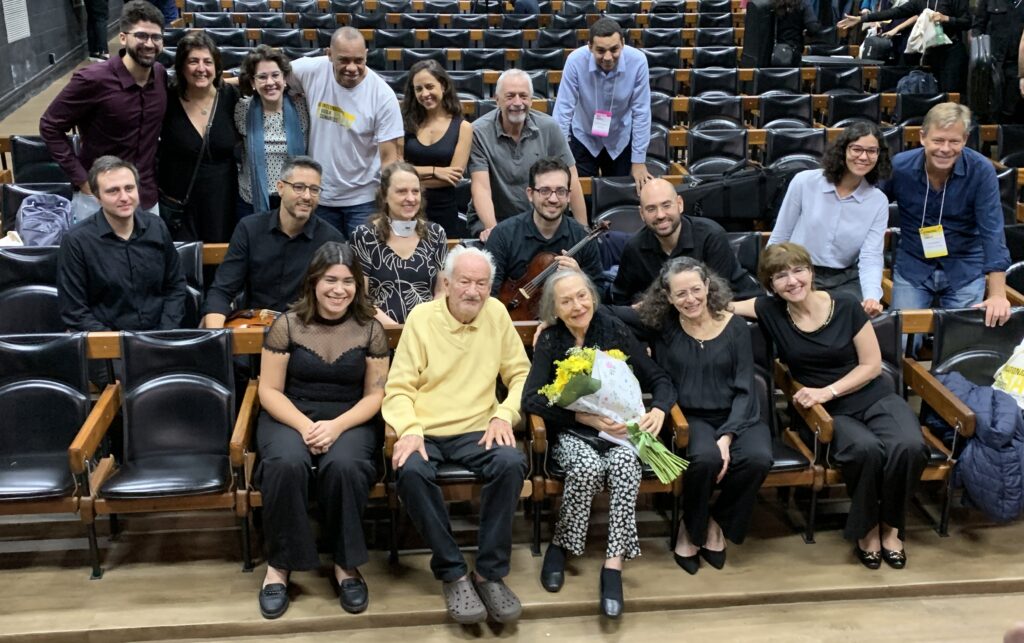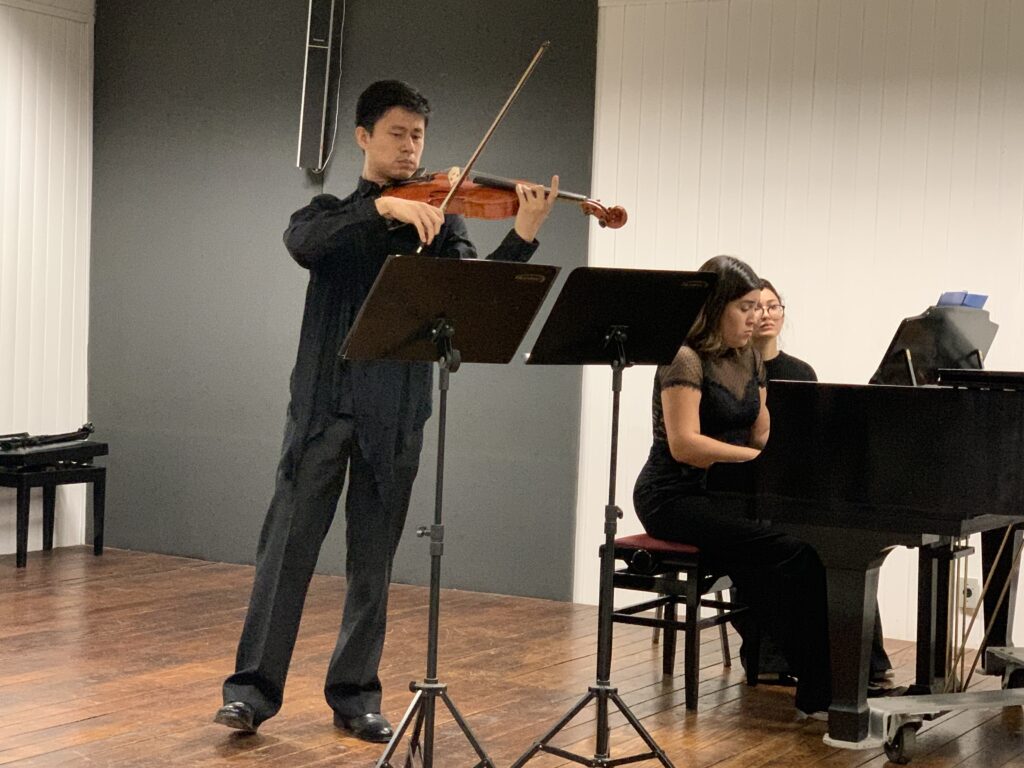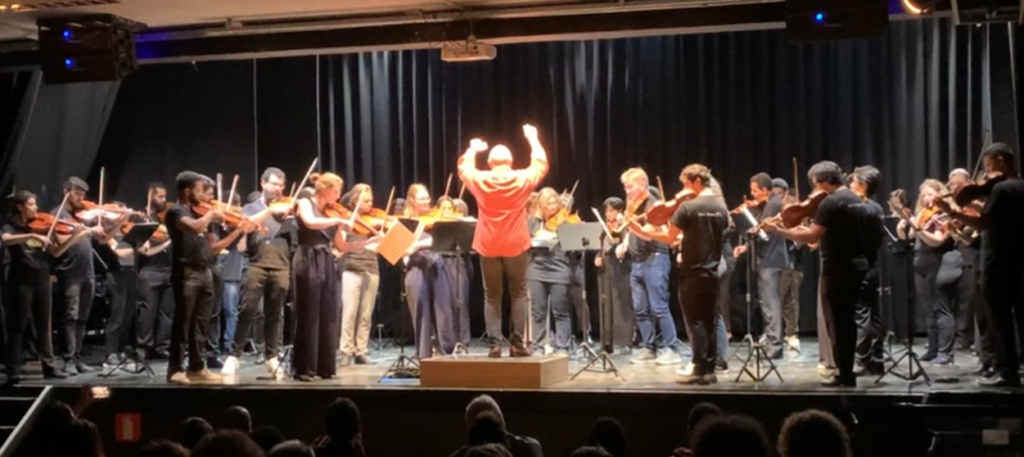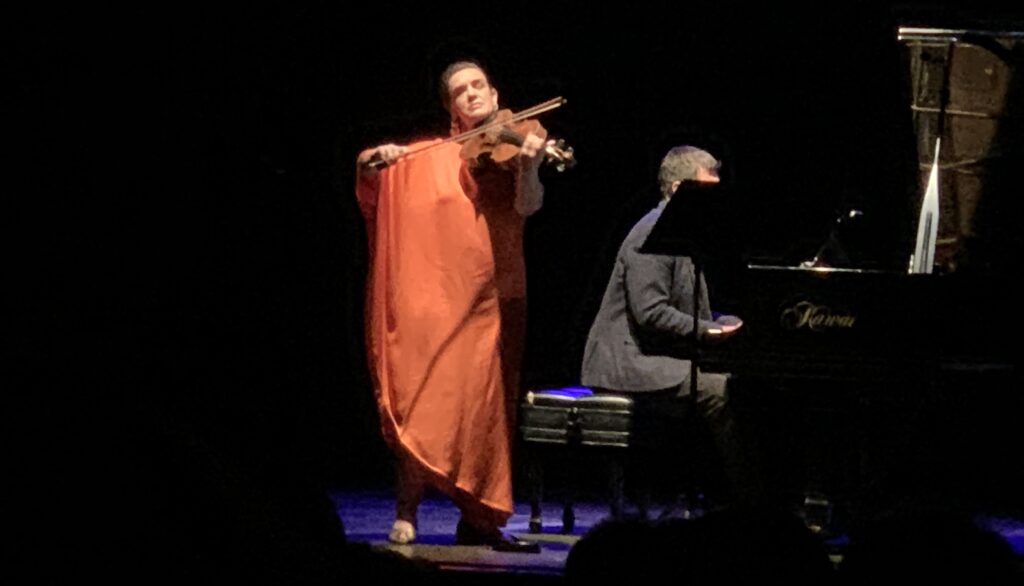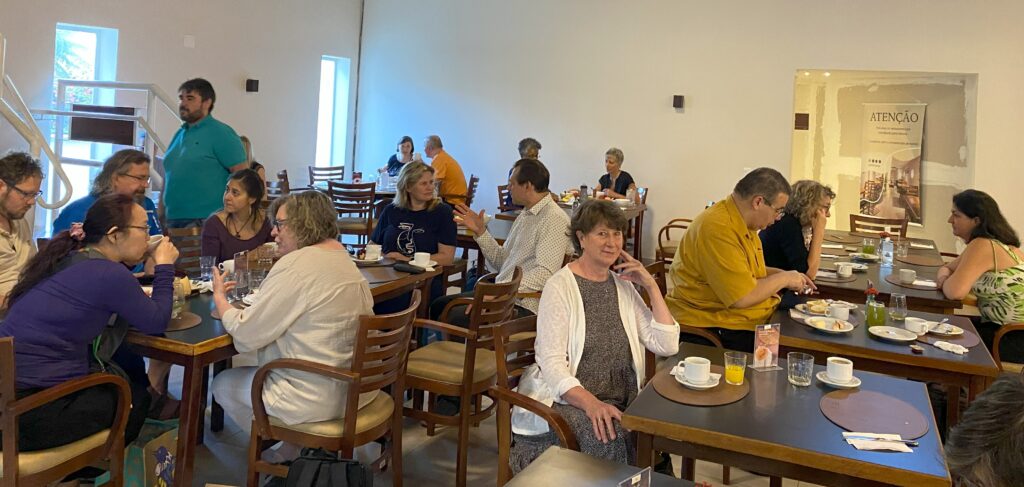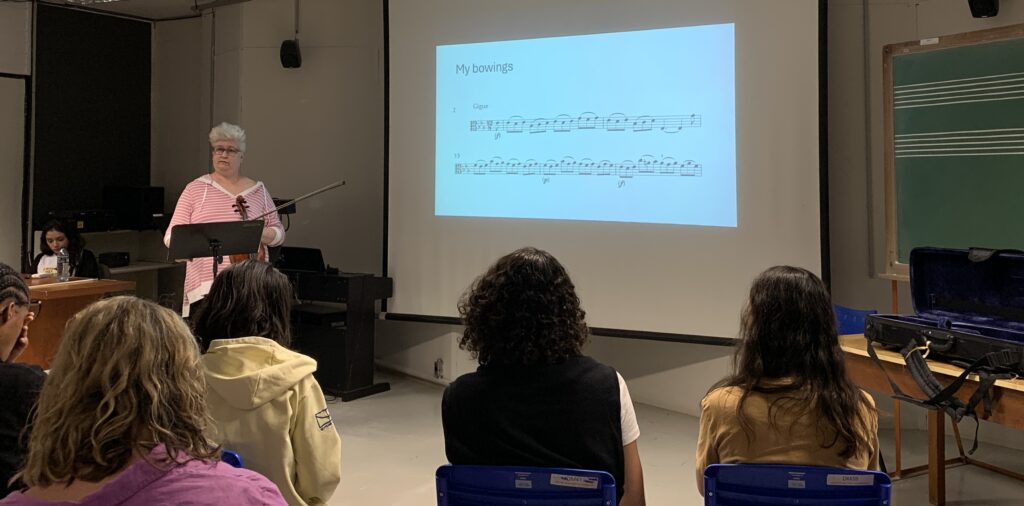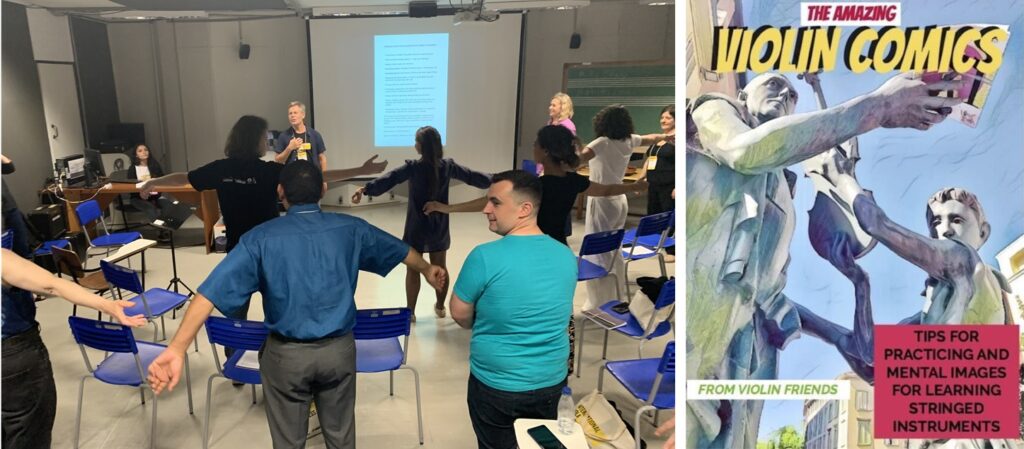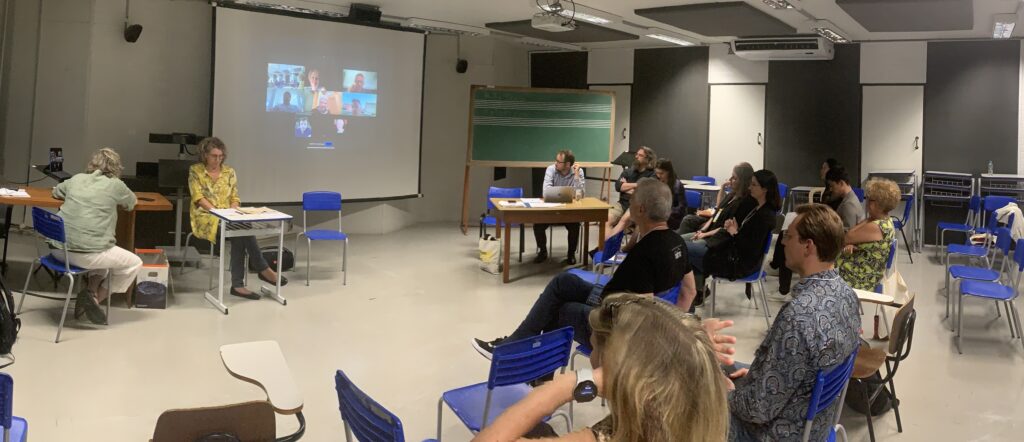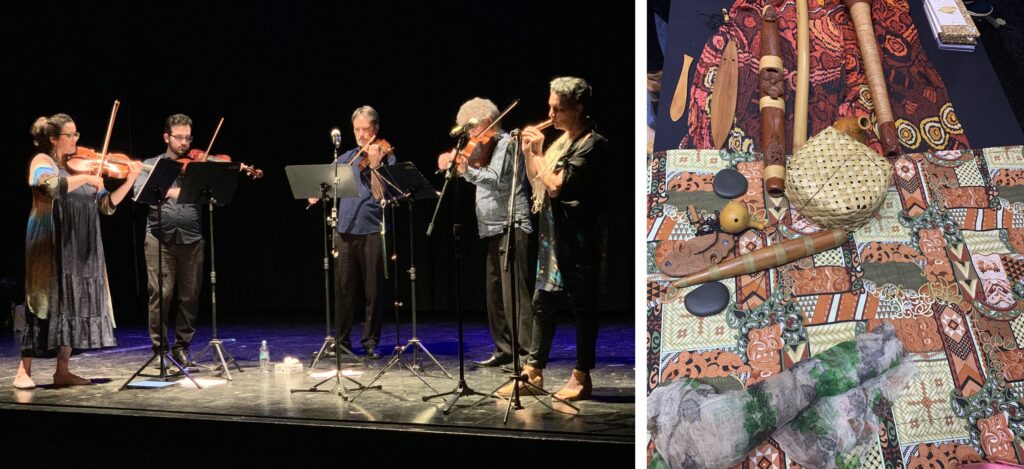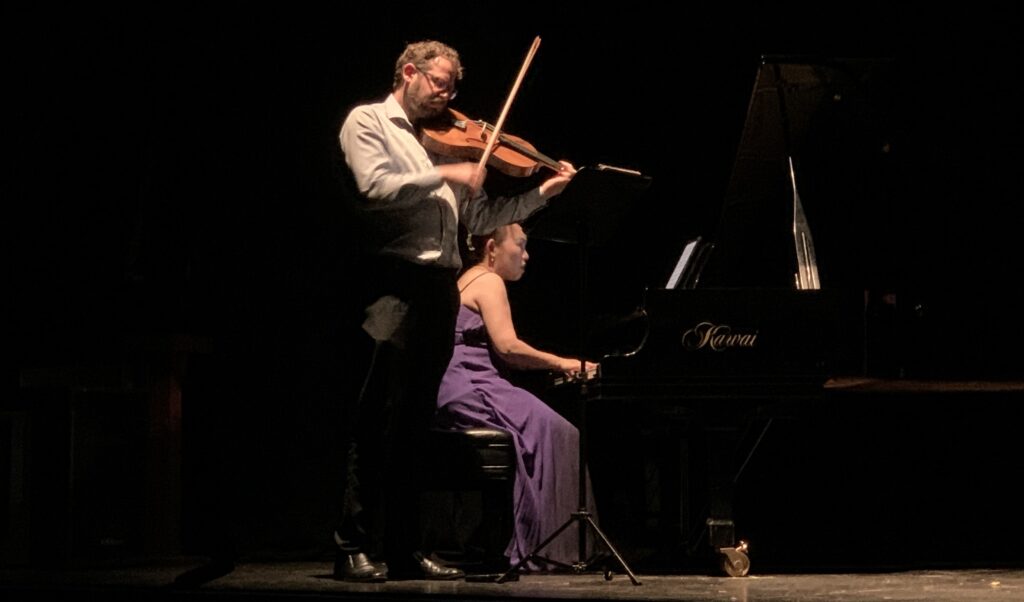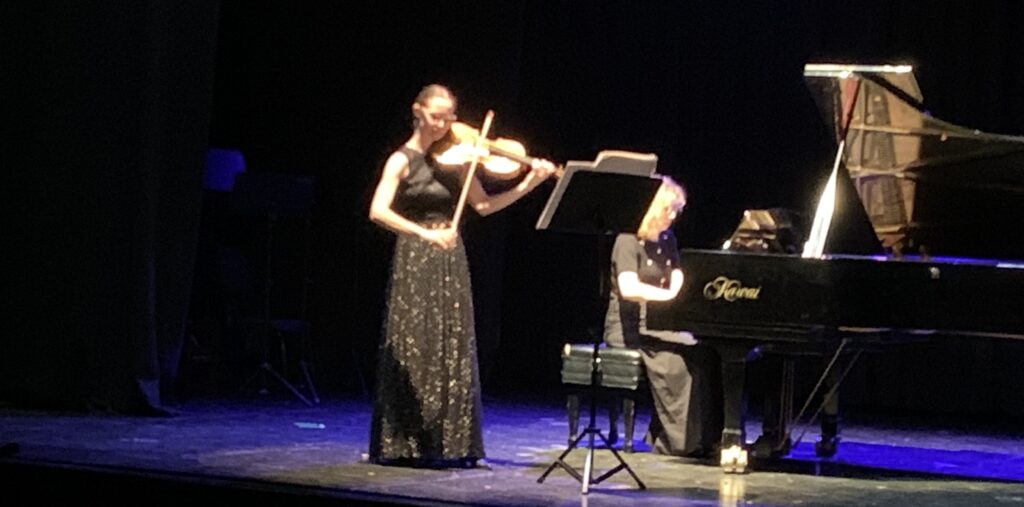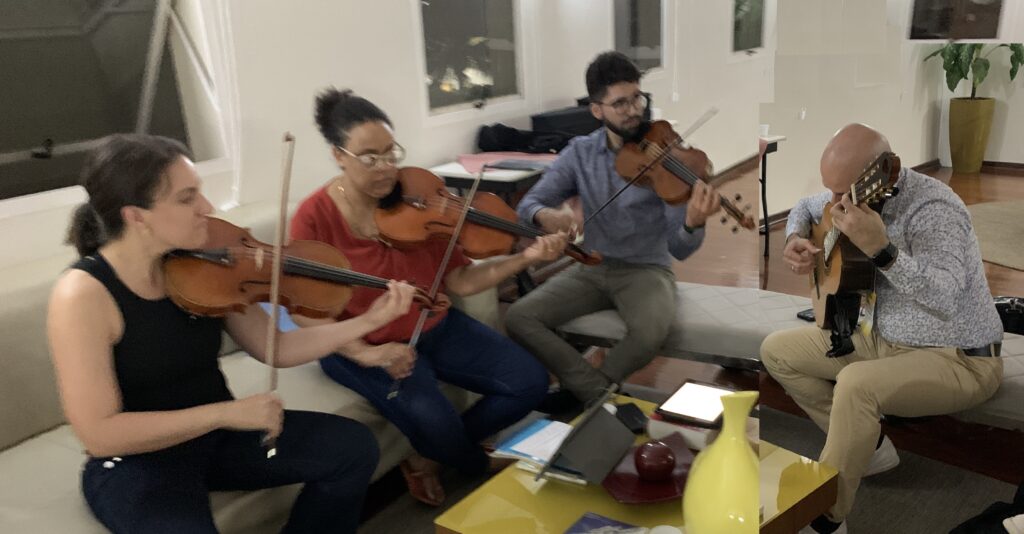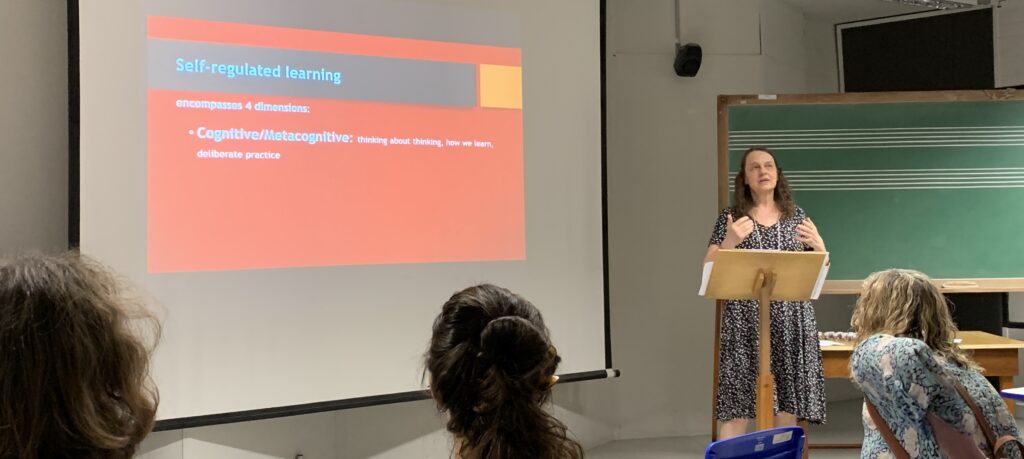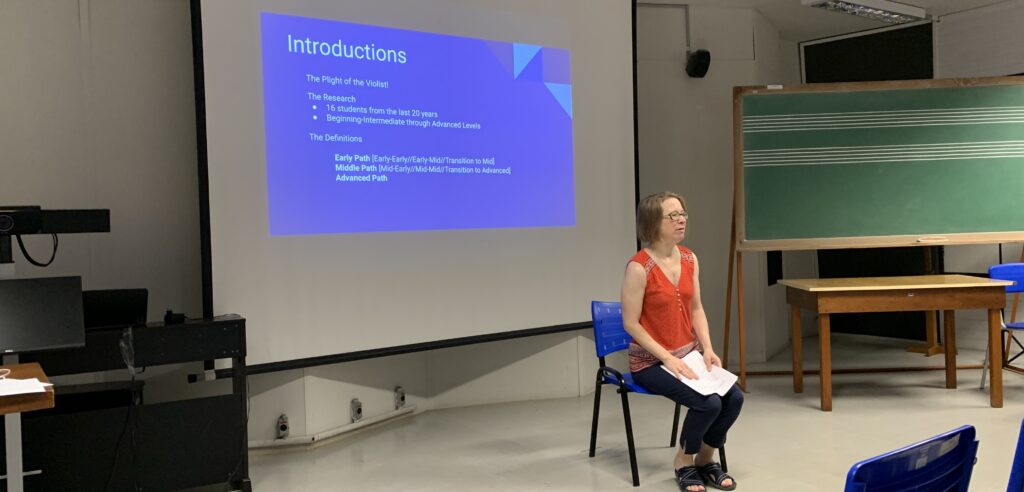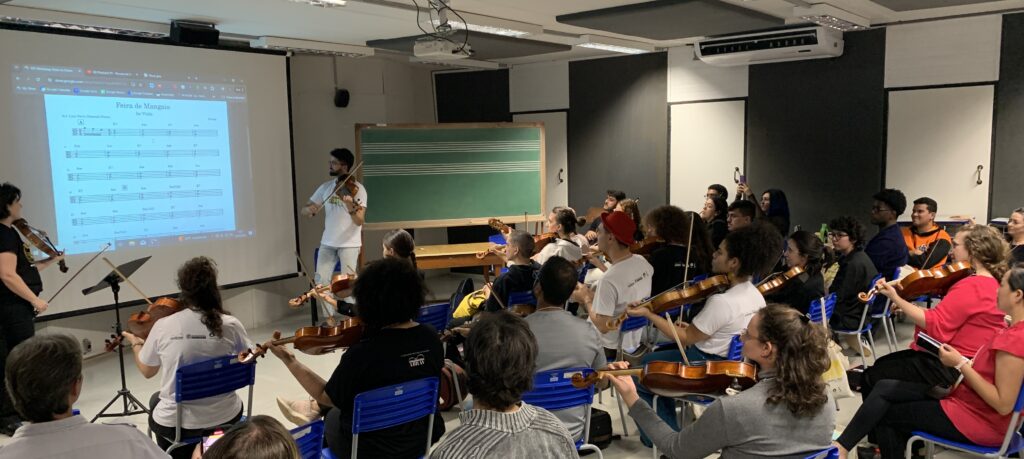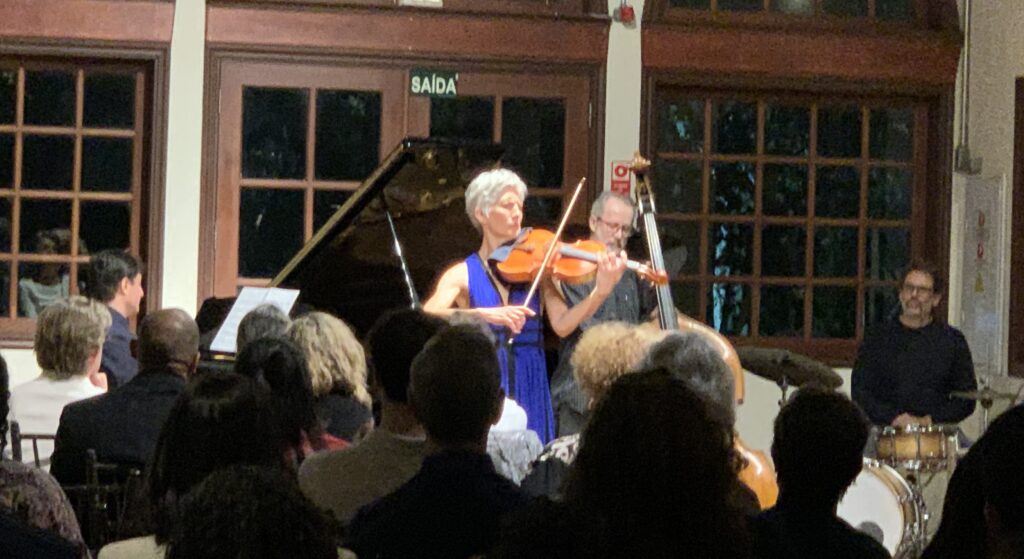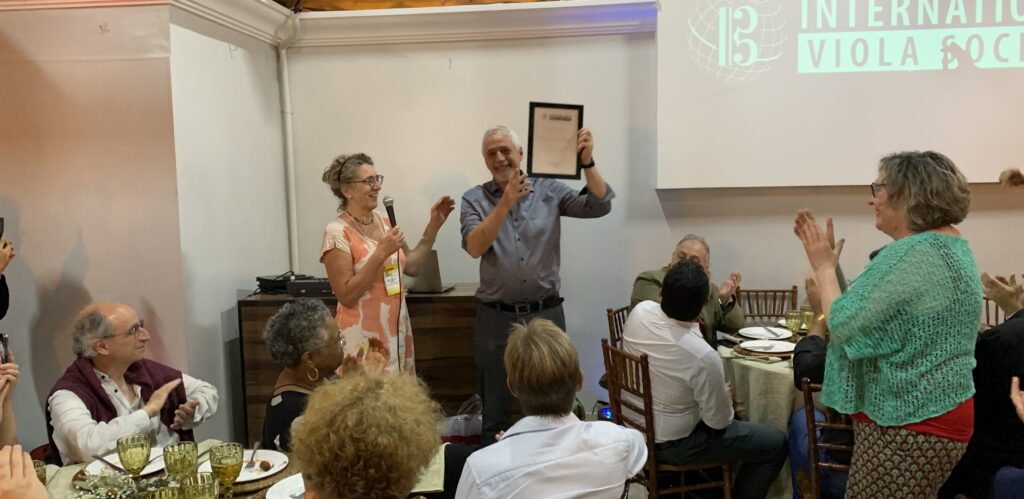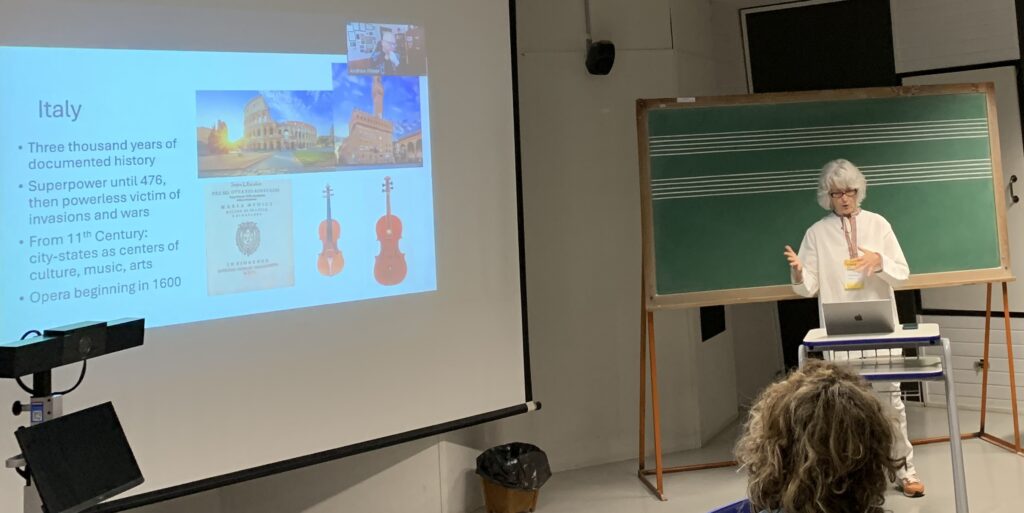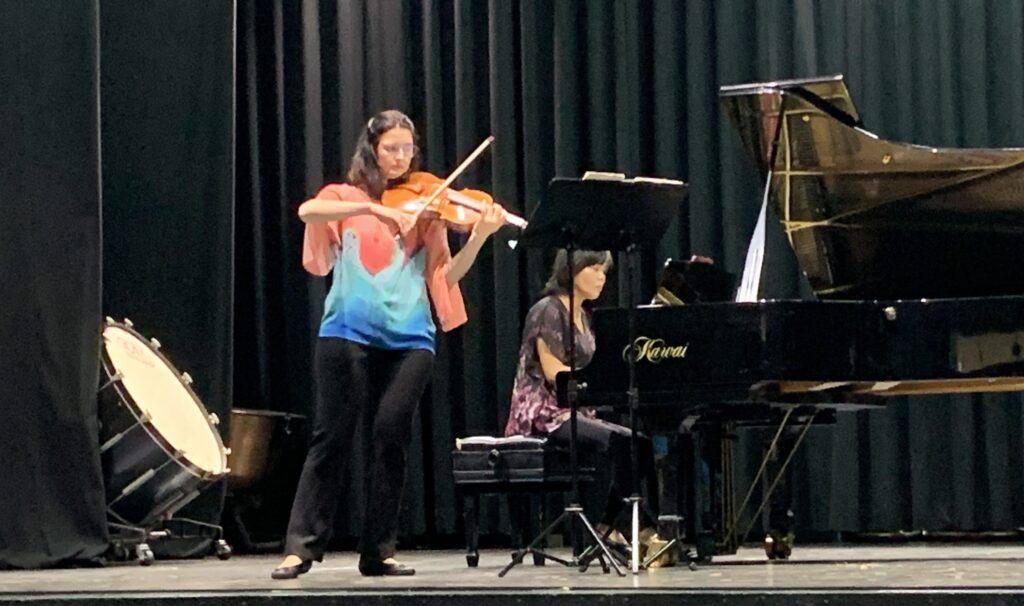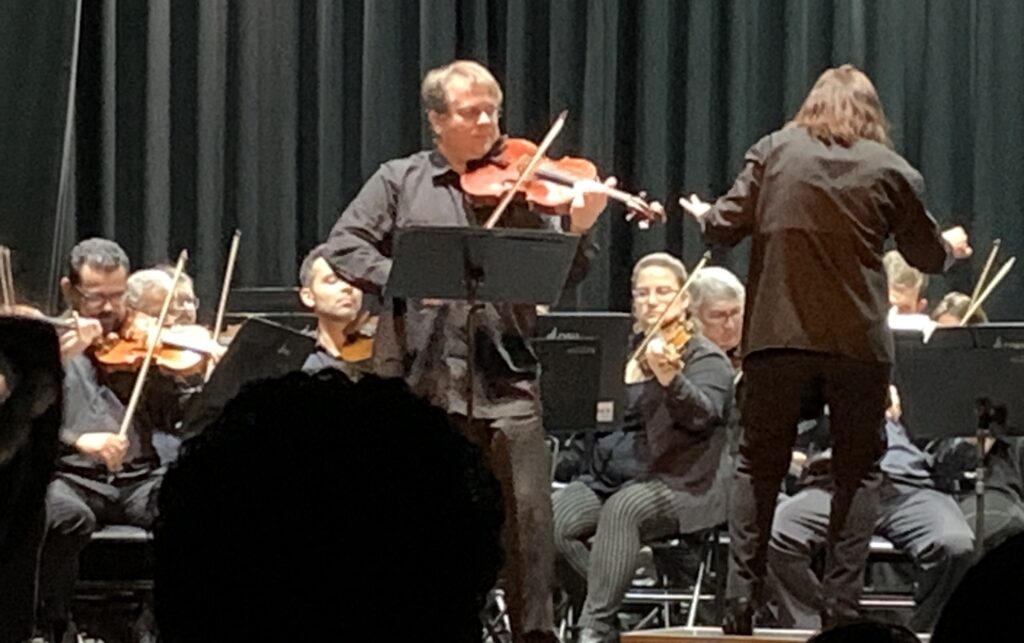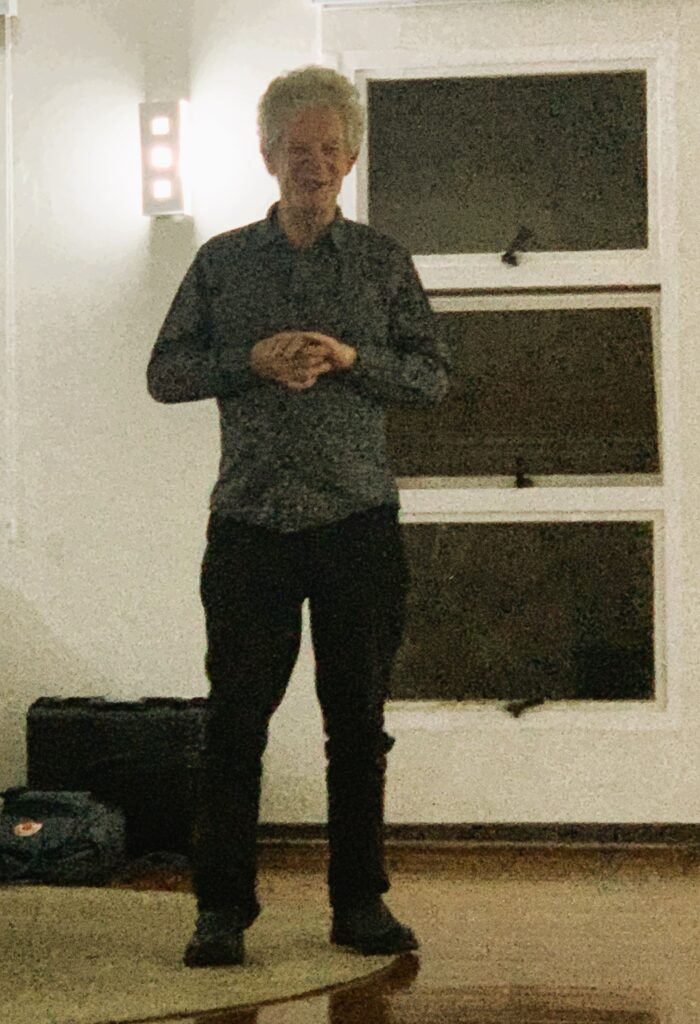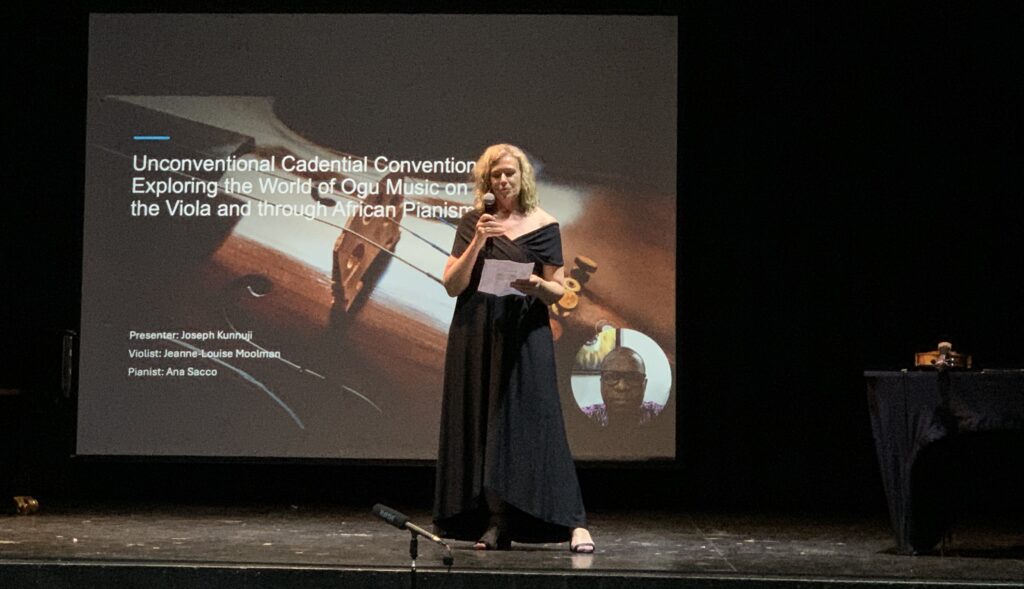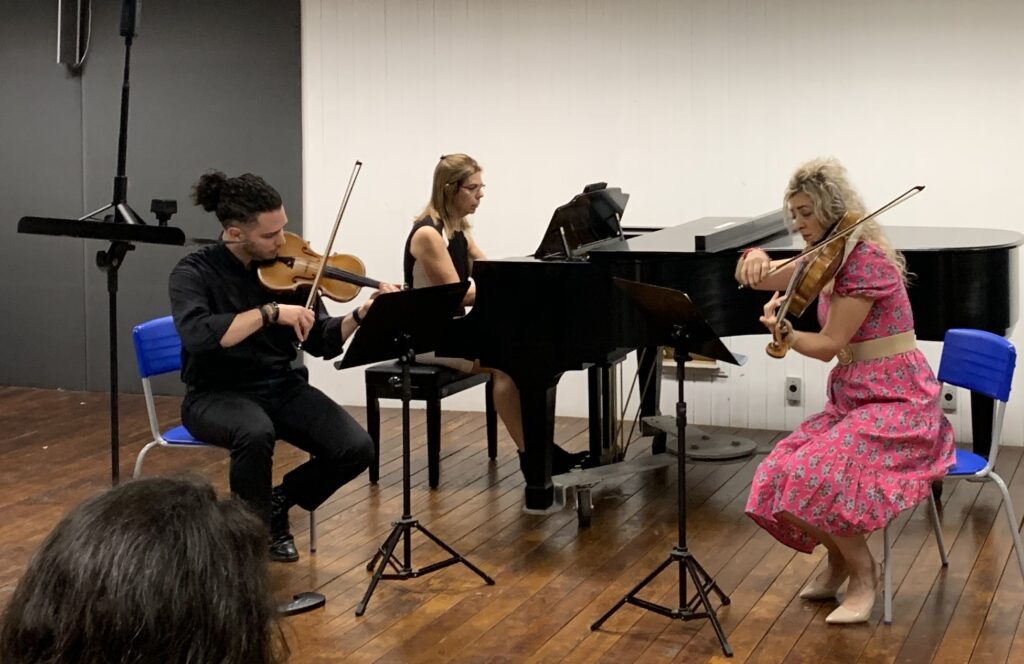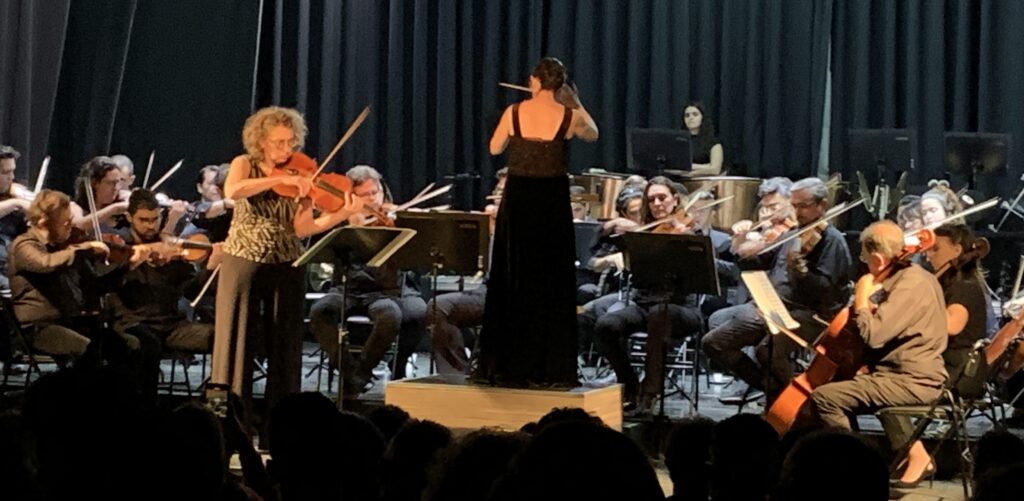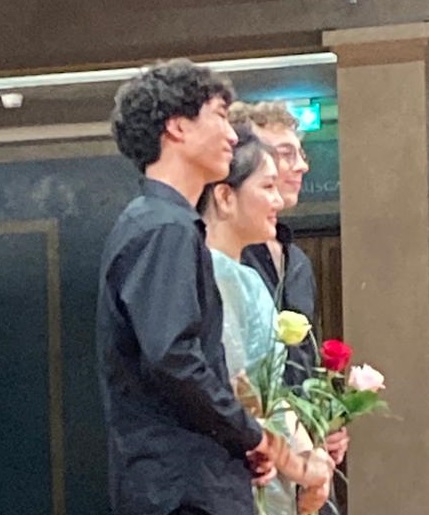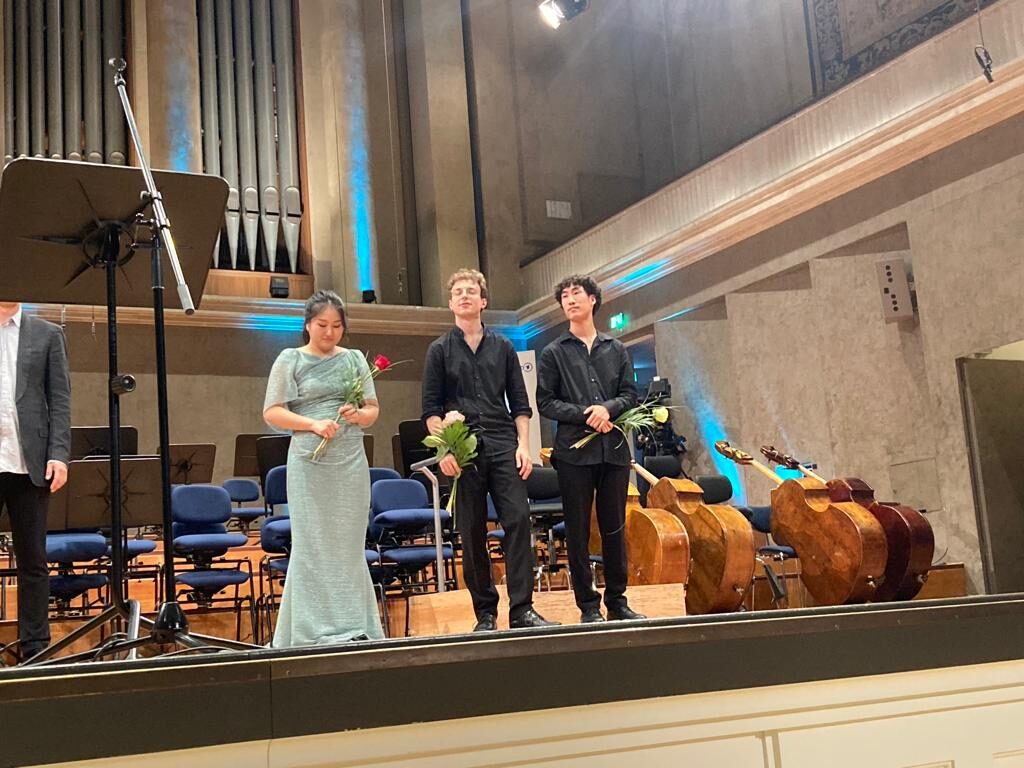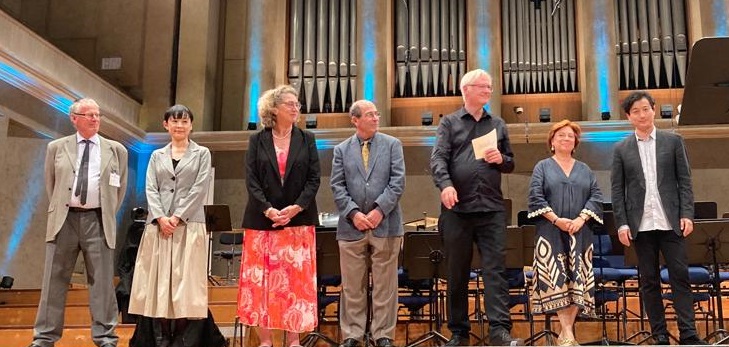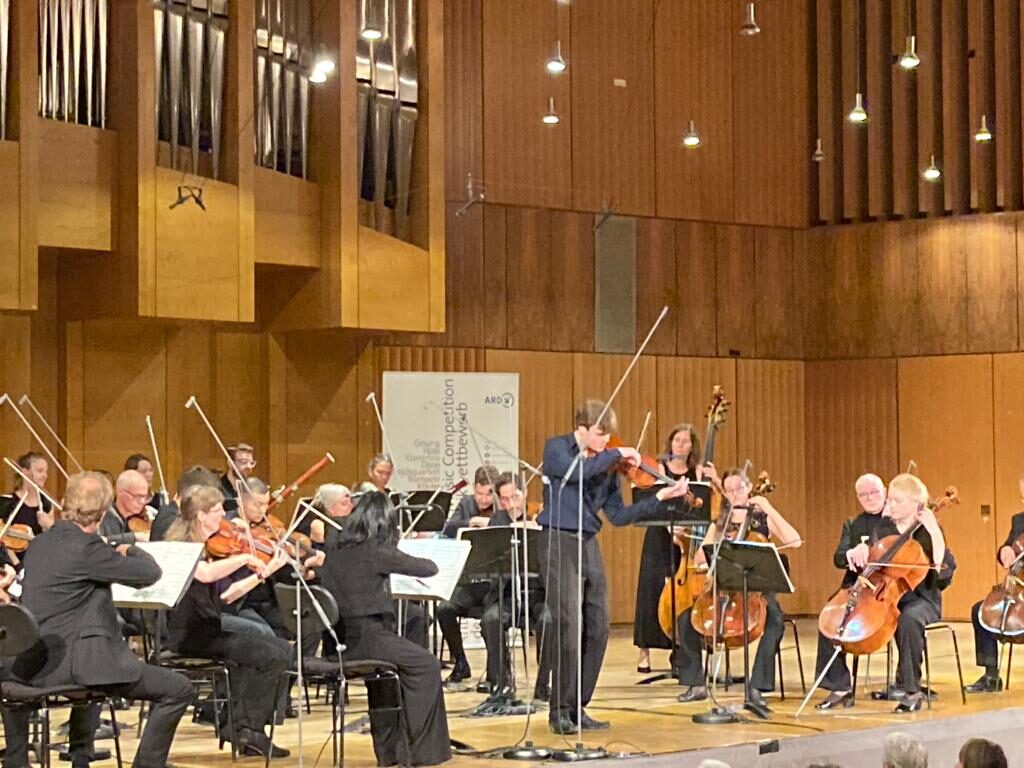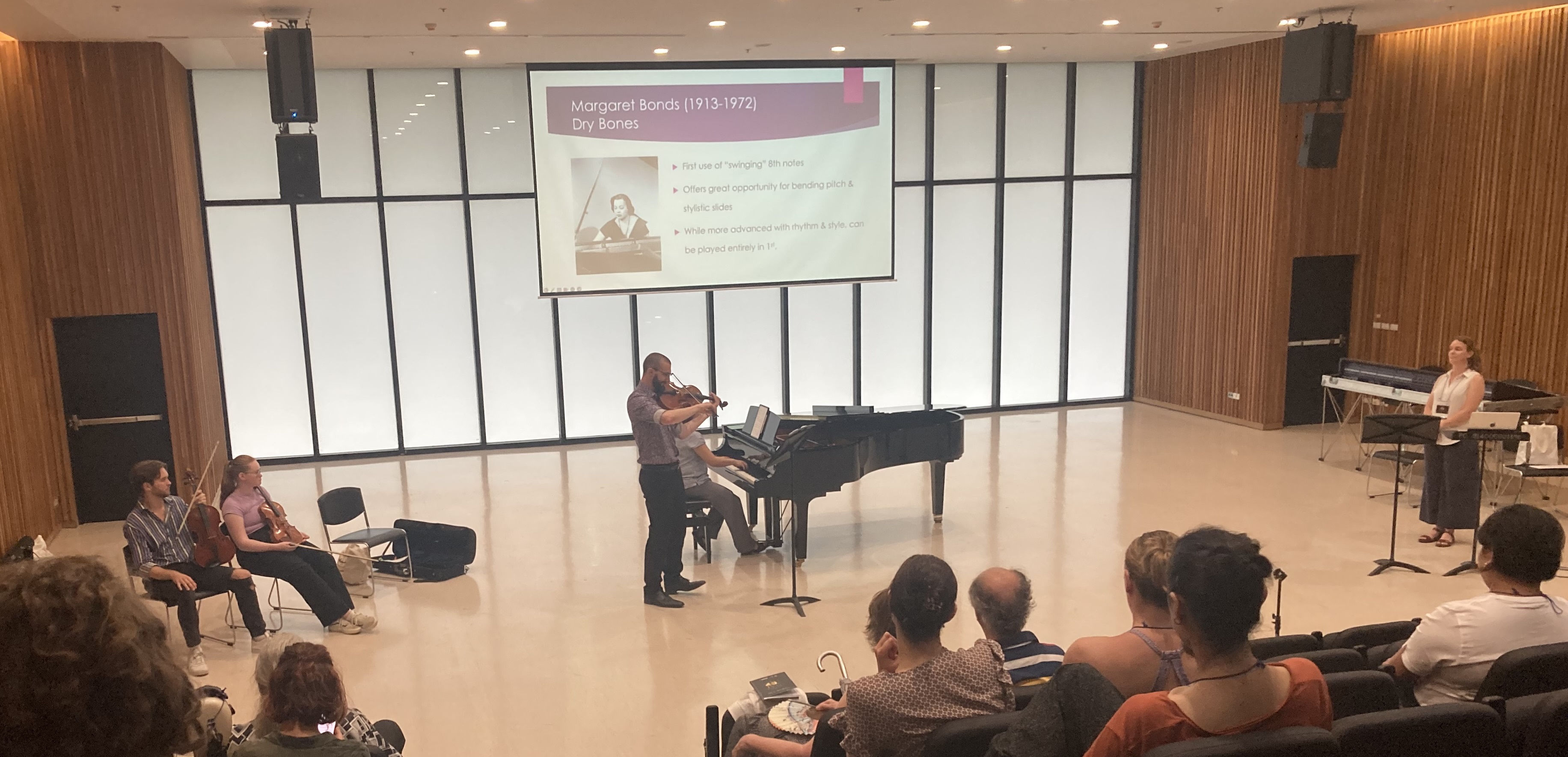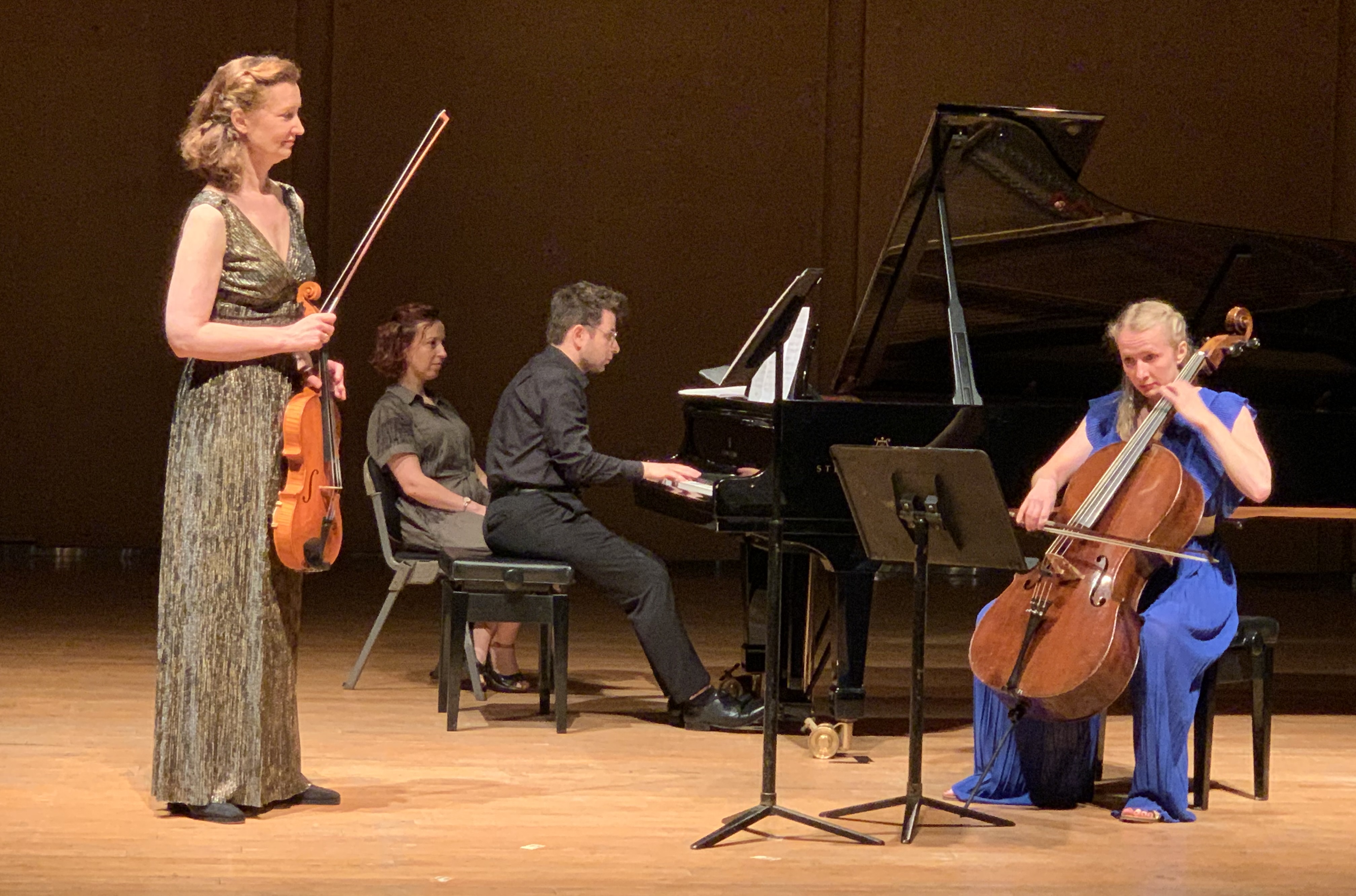The prestigious ARD music competition 2023 (ARD Wettbewerb) for Viola is ongoing these days in Munich (D). Karin Dolman reports exclusively for the DVS her personal impressions day-by-day until the Final on Sunday, Sept. 10th.
<next blog report>
Round 2, Day 1 (Sept 5th, 2023):
 Today I will make my first report from the ARD international Viola Competition in Munich. The First round was played last weekend, and from the 46 candidates who were pre-selected by video, 17 went to the quarter finals. The great young violists selected are:
Today I will make my first report from the ARD international Viola Competition in Munich. The First round was played last weekend, and from the 46 candidates who were pre-selected by video, 17 went to the quarter finals. The great young violists selected are:
- Noga Shaham, Israel
- Wassili Wohlgemuth, Germany
- Rebecca Benjamin, USA
- Aleksandr Tatarinov, Russia
- Njord Kårason Fossnes, Norway
- Yoonsun Jang, South Korea
- Brian Isaacs, USA
- Ionel Ungureanu, Germany
- Takehiro Konoe, Japan (but born, raised and educated in the Netherlands!)
- Kyungsik Shin, South Korea
- Gaeun Song, South Korea
- Zihan Zhang, China
- Penguin Zhu, China
- Carla Usberti, Germany
- Haesue Lee, South Korea
- Yixiu Lin, China
- Emad Zolfaghari, Canada
Before the competition started, I had to leave my belongings at the cloakroom. Therefore, I am unable to make drawings this time. I also have to learn to type very quickly on my phone. Good practice.
I met Jamie from Australia, 18 years old and visiting his first international viola competition. He was allowed to take a notebook, which makes sense. Young musicians should be able to take notes.
Noga Shaham (relative of a famous violinist?) was the first competitor. She started off with the solo piece ‘Ariel’ by UK composer Sally Beamish. Beamish is a composer I am not very familiar with her music, despite her numerous contributions to the viola repertoire. I will definitely buy this piece and listen to more of her compositions! This modest piece was well treated by Noga.
The second piece on her program was the ‘Lacrimae’ by Benjamin Britten. Her performance was very free and with a very beautiful warm tone which suits the work. When the sordino comes off the string, the power of this young violist is on full display. Noga chooses for the variations with flageolets in the ossia part.
This was followed by the whole first sonata by Johannes Brahms. All played with a beautiful bright tone.
Next was Wassili Wohlgemuth, one of the three German competitors. He started with the second sonata by Brahms. What appeals to me is that his colours in the Brahms are so rich. A very nice quick tempo in the first movement which suits him very well. In the first movement he plays the higher octaves, like the clarinet, which makes sense and he handles it very easily. Also the second movement was quick again, the contrast with the subito piano ending works well. Great performance
The Beamish piece is totally different in Wassili’s hands. More funny moments in it, with humor. The ricochet is very clear. He plays the piece by heart which makes the performance special. Wassili plays with a lot of rosin on his bow. When he pulls off a broken hair you see the dust come off..
The Britten ‘Lachrimae’ is more straight and gives one an idea of the sorts of variations. The last variation is so quick that I feared he would lose tempo, but he managed to keep this up. The Dowland quote is played with great purity, thank you Wassili.
After a small break and a meeting with Lars Tomter and Jutta Puchhammer, both in the jury, we continue with Rebecca Benjamin.
She starts off with the second Brahms sonata. She is a bit insecure in the beginning but already in the second phrase she is on track with a beautiful vibrato and singing voice. Rebecca is a delicate player, not very often associated with the USA. I like her approach to Brahms very much. And she is enjoying it!
In the next piece by Konstantia Gourzi you can really hear that the composer is Greek. The harmonies, intervals and slides and the bells around the foot give a Mediterranean feeling. The piece is named after a painting by Chagall ’Evening at the window’ and has 6 movements:
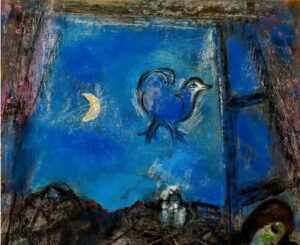 A Rooster in the sky
A Rooster in the sky
The yellow moon
Smoke from the chimney
The yellow Moon
In your arms
The yellow MOON
The first movement is a rhythmic movement, Greek folk music with bells. “The yellow moon” is short with a hotel mute, which gives a specific sound not often used. The third movement is with pizzicatos and glittering quick notes. “The yellow Moon”, is played with a normal mute. “In your arms” definitely refers to two people and has distinctly Arabic sounds. Clearly a love song and passionate. The last movement “The yellow MOON” this time is played without the mute! Great piece and great performance. Like the Beamish, this is a piece to take with me to the viola classroom.
The last piece on the program is the romantic sonata opus 11 nr 4 by Paul Hindemith. Rebecca gives a wonderful performance!
The fourth candidate Aleksandr Tatarinov also plays the piece by Gourzi, which gives us the opportunity to know this piece better. Aleksandr is a performer and plays with his audience. The “Smoke rising from the chimney” is more jazzy! He dares to really play on the fingerboard. The piece is even more rich in his hands! And he plays the instrument as if he is born with it.
The second piece is the Adagio and Allegro by Schumann. In the adagio he takes beautiful opportunities to use octave layers.
In Britten’s Lachrimae, you see that Aleksandr dares to use the bow differently. Like in the tremolo he turns the hair towards the fingerboard which gives a great sound. His playing is humorous as well in the pizzicato, and he communicates with his pianist. On the other hand, sometimes it is as if he is reading his part. It is like he didn’t expect to be in this round of the competition. The Britten is clearly not completely prepared. But I love his way of treating the viola and music.
After a good lunch with two friends, I am ready for the next four competitors. First is Njord Kårason Fossnes, 2nd prize winner of the Hindemith competition 2022. This very young violist is a student of Kim Kashkashian. She is so capable of giving every student the space to develop their own character. So Njord is not a copy of someone, but just himself.
He starts off with Schumann’s Fantasiestücke. The viola looks like a toy instrument in his giant hands. He is so well prepared. The sheet music is only pro forma. And the way he plays shows he is used to playing in competitions and concerts. Maybe these Fantasy pieces could also be played in the lower registers instead of so high on the instrument. Or could the piano score be altered?
The piece by the French composer Betsie Jolas, “Episode no 6” (1984) is much more abstract than many composers write today. It’s like a half awake dream, where your thoughts go from one absurd moment to the other, where you wake up and still don’t know what you dreamed. It’s music which doesn’t get into your memory. I played the piece myself once and couldn’t remember any of it. But Njord knows the piece very well and plays it by heart, making a story out of it.
The last piece is the Hindemith Sonata op. 25 no. 4, which is a very pushy sonata. Even in the lyric solos in the viola, the piano never stops pushing and pounding on the beat. You don’t get any chance to breathe. But the second movement gives some air to the player and public. I think this movement is one of the most touching movements in his oeuvre. With nearly no notes and use of the sordino. You only have to play what is written and no more. In the last movement Hindemith runs again. With some funny moments but with a pushy piano part. The passage on the C string is one of my favourite passages. This giant Njord is a sublime viola player who deserved the bravos received from the audience.
The second candidate of the afternoon is Yoonsun Jang from South Korea. She starts with Gourzi. Barefoot on stage, which makes sense with the first piece. Let’s see how this rooster sings. She has very clear left hand pizzicato’s. And also her timing of the bells is very clear, as if she is playing with a second player. I like again the use of the hotel mute! In solo viola pieces it is so good to use! The third movement is played more quietly, and gives the impression of two persons being on stage. Well done. I like the tempo, it feels timeless. Her “Smoke from the chimney” is more like the white smoke of a newly chosen pope. The second “yellow moon” sounds very beautiful, not messy but very bright. I like this performance of Gourzi very much.
To play Schubert’s Arpeggione in a competition is very dangerous. Every jury member will have a very strong opinion on the piece. It is a big task to listen with an open mind to the player. Same goes for an audience member. What are the rules to play such a piece on stage: first of all, you have to doubt every arrangement and make one your own. Second, you have to tell a story. And third, you have to communicate with the pianist. Very often the pianists play the piece as an automatic machine, so you have to wake them up and make it joyful for both players and share that with your audience. Only if you are capable of that, go ahead and play it in a competition.
The Hindemith Sonata 1939 is clearly written in a time when everyone was confused. The culture world couldn’t believe the hate that was spreading at the time. I think this disbelief is what this sonata is all about. Desperate, hopeful, joyful, sad, crying, laughter, every second of this sonata changes. It is a sonata that should be played more often and helps us be aware of the political choices we make.
Back to the competition. Yoonsun brings out this message well. Portraying all of the characters in the piece.
17.40 we go on with the last two competitors. First Brian Isaacs from New York, now studying with Tabea Zimmermann.
Brian starts off with a transcription of Grieg’s 3rd violin sonata, which suits the viola very well. Grieg needed much more time writing this sonata than for the first two he wrote. The heroic opening of the first movement is in great contrast to the lyric second theme. Brian is a very virtuoso violist, plays incredibly in tune and has a great vibrato. And he lets us believe we are in the mountains looking over the fjords in Norway.
Clearly Grieg was a pianist. The second movement starts with a heavenly piano solo where you only think the viola will disturb it, but Brian joins in heavenly manner. The second theme is like a dance of fairies. The third movement looked like a whole sonata on its own, and so passionately played. Wow, how beautifully this young man plays!
Grażyna Bacewicz was one of the first recognized female composers from Poland with an international career. Born in 1909, trained as a violinist, she composed mainly for her beloved violin. We hear her fourth capriccio for violin solo but now on the viola, composed one year before she died, only 60 years old.
The capriccio (I suppose a fifth lower) is really in a Polish style. They were much more into avant-garde techniques than the rest of Europe at the time. The capriccio seems to be in more parts. The second part with a lot of flageolets and very demanding. How well in tune are all of the octaves. The third part is with a lot of double stops and arpeggios. The fourth part is more lyrical, ending with the most virtuosic passages imagined.
Brian wraps up with the sonata opus 25 no. 4 by Paul Hindemith. As well so perfect and with great taste! Like what I said, just play the second movement and didn’t do too much. The sonata was written earlier in 1922 after the Great War, when Hindemith decided to fully concentrate on the viola. Lucky we are that he did so. I nearly cry listening to the second movement. The chords of the last movement are really recognizable as tonal chords. With a lot of players you hear only a kind of percussion here. The passage on the c-string is played more at the frog, which sounds really crispy. After the long B, the tempo stays very slow which gives us a great ending! Bravo. He only lost about 20 bow hairs!
Brian should be careful that he keeps a few hairs on his bow for the final on Sunday. Because I think he is definitely a candidate for that!
The last candidate is Ionel Ungureanu. He starts off with the Beamish piece. Ungureanu is a great musician, and a composer himself. He has a great clear viola. But of course he still has to do it. All the notes, flageolets, ricochet, come out so easily.
Next piece on the program are the Fantasiestücke by Schumann. In this arrangement I miss a bit of the lower register of the viola. Ionel was also a competitor at the Hindemith competition last year, and I was already in favour of him then. He has grown even more, with this clear voice, and incredibly good intonation, playing so nice and clean and still with passion and grabbing you by the throat.
Once more Hindemith’s “1939” Sonata. Ionel knows the piece very well, and brings all the characters out. All the arpeggios so perfect. I think in Ionel will be another finalist!
So many gifted viola players walking around… is this the case with the violin as well I wonder? I am looking forward to tomorrow’s session!
Note: The competition is Livestreamed on the ARD website, and also on YouTube, where you can go back and listen (if you missed it) and make up your own mind of the performances!
<next blog report>
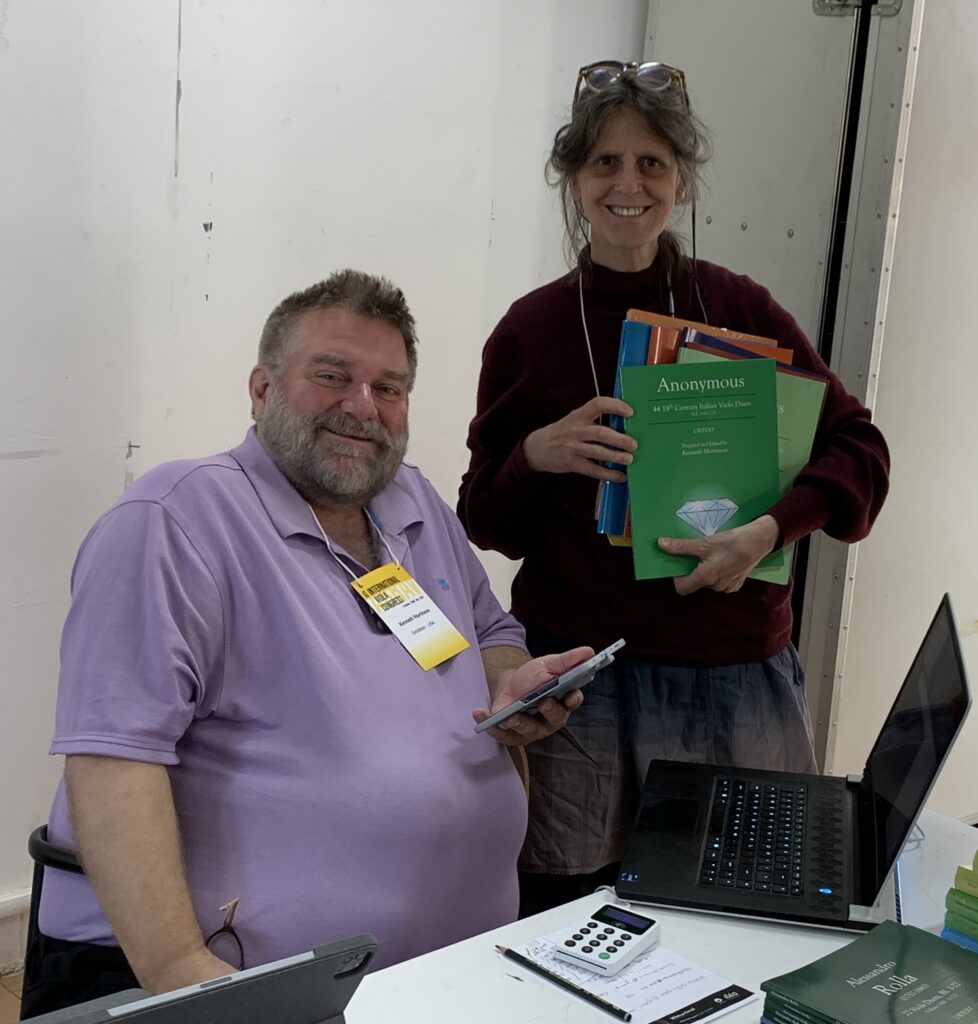 Next it was time for the yearly shopping spree at Ken Martinson’s (Gems Publishing) table. He always makes sure to have some novelties to present at a congress. This year’s catch included two Sinfonia Concertantes by Karl Stamitz, both discussed at Ken’s lecture on Friday afternoon (which I could not attend). Furthermore we bought viola duet books by Félix-Jean Prot, Mathieu Blasius, Leopold Jansa, and “44 18th Century Italian Viola Duets” (in 2 volumes) by “various” anonymous composers.
Next it was time for the yearly shopping spree at Ken Martinson’s (Gems Publishing) table. He always makes sure to have some novelties to present at a congress. This year’s catch included two Sinfonia Concertantes by Karl Stamitz, both discussed at Ken’s lecture on Friday afternoon (which I could not attend). Furthermore we bought viola duet books by Félix-Jean Prot, Mathieu Blasius, Leopold Jansa, and “44 18th Century Italian Viola Duets” (in 2 volumes) by “various” anonymous composers.
